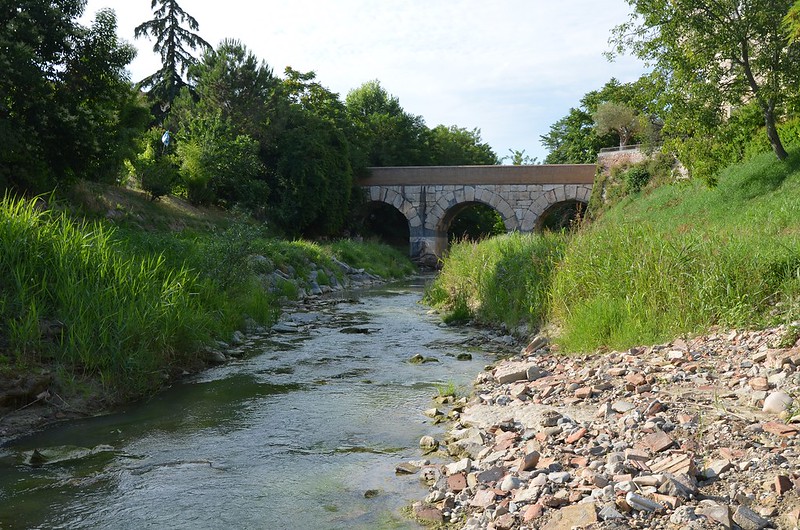“Crossing the Rubicon” is a way of saying “no turning back”, a decisive action to take control of your destiny and pass a point of no return with unstoppable resolve. But getting across the Rubicon itself is a pretty easy feat, physically speaking, so why does this idiom have so much weight?
The Rubicon still flows today. It’s a river in the northeast of modern-day Italy, just south of Cesena and north of Rimini, which runs down the Apennine Mountains and exits into the Adriatic Sea. It’s far from an impassable gulf that’s beset by rapid, beast-infested waters. In fact, today, it’s little more than a quiet, shallow stream that’s easily crossed by picturesque bridges.
The reason why it has such a legendary reputation is its historical significance during the fall of the Roman Republic and the rise of Julius Caesar. By “crossing the Rubicon”, Caesar effectively triggered the Roman Civil War, setting him on a course towards near-unchallenged power (until, y’know, the stabbing incident).
Back in the first century BCE, the Rubicon River served as a natural boundary between the areas directly under the control of Rome on the Italian Peninsula and Gaul, an “untamed” region in mainland Europe that was home to huge bands of Celtic tribes.

A bridge over the Rubicon River in Savignano sul Rubicone, Italy.
The Romans, led by the notoriously effective general Julius Caesar, had managed to conquer much of Gaul through a series of bloody military campaigns between 58 and 50 BCE. He later boasted that his conquests in Gaul had left a million dead and another million enslaved.
This was a vast patch of land to manage in ancient times, but the Romans had developed a system of governance to keep things under control (at least in theory). Generals were given imperium (the “right to command”) to rule over their respective provinces, but only elected magistrates could hold power within the core of the Roman Republic. If a general and his army decided to leave their far-flung province and head towards Rome, it would be a clear challenge to the power of the senate and would be treated as an insurrection.
In January 49 BCE, that’s exactly what Julius Cesar did. Scholars have debated endlessly why he took that fateful step, and the story gets very complex, but the simplest truth is that the Roman Republic had been crumbling for decades, torn apart by the usual suspects of doomed civilizations: social unrest, corruption, and political instability.
Meanwhile, soldiers in the provinces had grown increasingly loyal to their generals, not the distant republic of Rome hundreds of miles away. As such, generals – especially the ever-ambitious Caesar – were able to amass armies of well-trained, faithful warriors.
Caesar was no fool. He knew the act of crossing the Rubicon wouldn’t go down well, but he knew it was a necessary step towards obtaining ultimate power. Upon making the decision, he famously uttered the words: “let a die be cast”, another way of saying “there’s no turning back now”.
The rest is history, as they say. Once the Rubicon was crossed, civil war erupted between two factions led by Julius Caesar and his once-ally Pompey. What followed was a brutal struggle that reshaped the Roman Republic. Caesar’s eventual victory marked the end of the Republic’s waning democratic institutions and paved the way for the rise of the Roman Empire.
The true challenge wasn’t crossing the river itself, but taking the irreversible step of choosing a path and embracing the consequences that continue to rumble today.
Source Link: Why Was Crossing The Rubicon (A Pretty Pathetic River) Such A Big Deal?